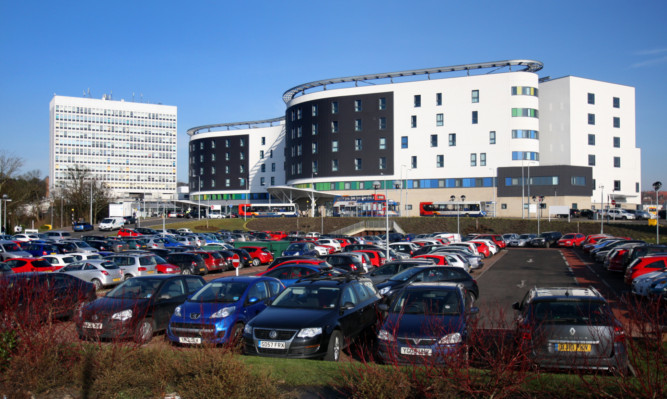Overstretched staff at Victoria Hospital in Kirkcaldy have been struggling to cope with bed occupancy rates of up to 124%.
The hospital is staffed with enough nurses to deal with occupancy rates of 85% but it has been swamped by an increase in medical admissions. Bed occupancy for medical admissions reached 124% last month and peaked at 118% in wards.
There has been a deluge of complaints from patients and relatives claiming they have had bad experiences in the hospital, prompting Fife Council leader Alex Rowley to again question the ability of NHS Fife to meet local health needs.
Operational divisional committee chairman Dave Stewart said the health authority had responded to the situation by bringing in more staff and reopening ward 15, which looks set to stay open indefinitely to meet the demand.
He said: “If beds are occupied more than 100%, beds are only staffed by nurses for 85% occupancy.
“If we are running at 100% or over it means we’ve got staff working really, really hard because we’ve got more patients than we should have. That’s when we get stories from patients saying the nurses are great but there aren’t enough of them.
“We recognise the standard of care was not up to the level we aspire to.”
Mr Stewart said NHS Fife had taken on board complaints from patients.
“Performance on occasion was certainly not as good as we would have liked it to be but here’s what we are doing about it we’re getting extra staff and extra medics, and over the course of the year we will have extra money to do that with.
“I hope the public sees that we are on the case.”
Figures for December indicated that medical admissions were running at 117% and wards at 116%.
“Even during the summer we were under pressure here,” Mr Stewart said.
“To me that indicates that we don’t have enough capacity, even during the summer.
“I don’t want to see ward 15 closed until somebody comes back to this committee and tells us they’re going to close it and says why they are going to close it.”
He also highlighted the problem of patients being “boarded” in unsuitable wards because of lack of capacity. As well as being detrimental to patient care, moving patients from ward to ward can also increase the risk of infections spreading.
Mr Stewart added: “When patients are boarded out, then moved somewhere else and moved somewhere else, it causes angst for the patient and it certainly upsets the relatives.”
Medical director Gordon Birnie agreed that ward 15 had to stay open but said it was not an ideal situation.
He said: “I think in the current configuration there is no other option than to keep ward 15 open and establish it as a permanent ward. But it is important to look after patients in the appropriate settings.
“To look after patients who do not need acute care in an acute setting puts them at risk. Continually expanding acute care and looking after people who should be cared for in a non-acute setting is an inappropriate use of resources.”
He added: “Over the past 12 months, we have seen a 10% increase in emergency admissions but a 15% increase in patients over the age of 75. What it means in reality is roughly another 10 patients a day over the age of 75, which is a lot of additional demand on the system.”
Non-executive member John Winton said he was “shocked” when he read the bed occupancy rates.
“If we look at the occupancy, it is grossly unfair to patients and to staff. About ward 15 being opened, I would like to see it remain open until we don’t need it. OK, it is over in the tower block, but we will have to live with that.
“If we are opening an extra ward, we need staff to keep that manned.”
